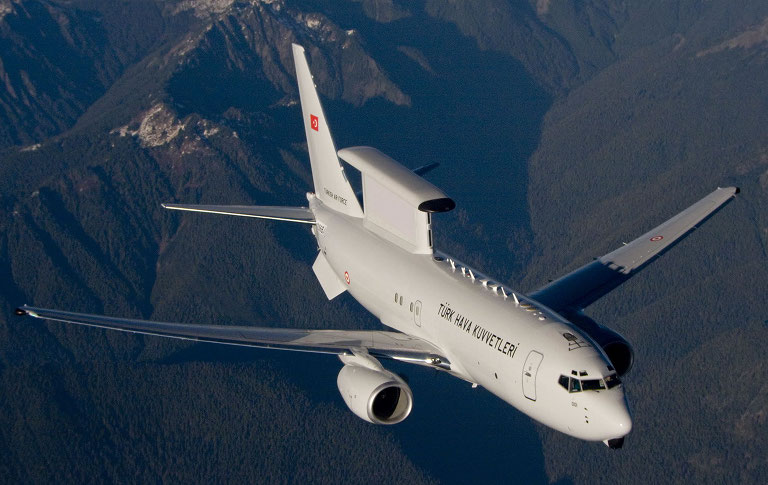The Future Of Aerial Surveillance

Ever since the first commander sent a scout up a tree to get a better view of enemy troops, the concept of aerial reconnaissance has been embedded in the psyche of military forces. The higher you can get, the further you can see: so intelligence-gathering from the air is a vital task for air forces worldwide.
U-2 Spyplane
Aerial reconnaissance came of age during the Cold War. The U-2, designed in the 1950s by Clarence “Kelly” Johnson at Lockheed Martin, was a deliberately simple aircraft with one winning feature: it would fly higher than the missiles trying to shoot it down. The concept worked until 1960, when a U-2 flown by Francis Gary Powers was downed by a newer and more capable Soviet missile.
Johnson’s next design, the A-12, added incredible speed into the bargain. The A-12 morphed into the SR-71, which flew at three times the speed of sound, and was virtually uninterceptable.
The days of these Cold War spies will soon be over. The SR-71 was cancelled in the late 1990s, while the U-2 will soon be retired. However, the need for aerial eyes is keener than ever. What other aircraft currently carry out these missions, and what can we expect to equip the surveillance squadrons of tomorrow?
Boeing Wedgetail
Aircraft can take decades to design and manufacture. So if surveillance equipment can be fitted to an aircraft design that’s already proven to be reliable, those newer, high-end sensors, radars, cameras and other devices can get in the sky sooner. Airborne early warning (AEW) aircraft, for example, are sent up to cast a surveillance net higher and farther, to make sure that any aircraft or missiles on their way in can be spotted sooner. The best-known of these aircraft is the Awacs (Airborne Warning And Control System); a Boeing 707 jet augmented by a distinctive mushroom-shaped radar. The latest AEW platform is the Wedgetail, another heavily modified Boeing passenger jet (this time it’s a 737).
Unlike the Awacs’ rotating radar, which is mechanically turned so it scans every compass point once per rotation, the Wedgetail’s radar is fixed, and the direction it “looks” is programmed electronically. It gives the Wedgetail the ability to concentrate on the busiest airspace. The crew includes a pilot and co-pilot as well as a team of seven analysts who sit at computer workstations in the back of the aircraft, operating the sensors and interpreting the information they collect.
The Wedgetail was developed for the Royal Australian Air Force (RAAF), who bought a fleet of six of the aircraft. Even equipping these existing craft took time: the project began in 1996, a contract for four aircraft was signed in 2000 but was eventually upped to six, the first of which was delivered in 2009 with the RAAF declaring the fleet ready for business in 2012. The cost of the programme is in excess of AU$3.6bn ($3.36bn).
Airseeker/Rivet Joint
The latest addition to the Royal Air Force’s (RAF) surveillance fleet is another surveillance platform based on an old airliner. The UK has taken delivery of the first of its three RC-135 Rivet Joint fleet, which they have named Airseeker. The aircraft began life as Boeing 707s back in the 1960s, and there’s room for more than 30 analysts, technicians, engineers and systems-operators on board.
But Airseeker/Rivet Joint doesn’t take pictures, or scan the airspace using radar. Its primary role is to gather Sigint – signals intelligence – the electronic communications transmissions that fly across today’s increasingly digitised battlefields.
Precisely how and what Rivet Joint does is still highly classified. The RAF’s website offers few clues to 51 Squadron’s mission or how it goes about conducting it, but the US Air Force’s Rivet Joint fact-sheet sheds at least a sliver of light on the aircraft.
This tells us that the “on-board sensor suite … allows the mission crew to detect, identify and geolocate signals throughout the electromagnetic spectrum”. That is, the various antennae and other equipment can work out where, when and what communications are taking place, whether it’s radio, radar or other sources of electronic emission.
Yet even this newest of RAF capabilities has been around the block a few times. The three jets the UK has bought are secondhand: even though they were the youngest in the USAF fleet of C-135 tankers before they were sold to the RAF and converted to Rivet Joint standard, the three airframes first flew in the mid-’60s and each had over 20,000 hours on the clock.
Fighter jets
Not all the aerial spies are as large and lumbering as these former airliners. Fighter aircraft have been carrying out reconnaissance missions for years. It was the earliest dogfighters that carried out bombing runs in the First World War, and the pilots would usually report back on whether they’d hit their targets or not. As fighter design has evolved, so too have the sensors: today’s fighters can get imagery and other data from a bristling array of sensors embedded inside the aircraft or attached to the outside in aerodynamically engineered pods.
Take, for instance, the RAF’s Tornado GR4. It carries a sensor called DB-110 in a large pod mounted under the fuselage. This camera can take astonishingly detailed imagery from distances of at least 70 miles away. It’s used in Afghanistan to provide pictures from directly above; these are then pored over by imagery analysts. They’re not just able to see things like buildings, tanks or trucks – by comparing today’s footage to last week’s, they can spot disturbed earth that could indicate a recently buried IED (improvised explosive device).
The pod can even take stereoscopic images, which the analysts view through 3-D glasses and can then use to work out the heights of walls or see if a possible place to set a helicopter down is, in fact, unsuitable for landing because it’s criss-crossed by suspended cables.
The next jet fighter to join the British military fleet – the American Lockheed F-35B – has a series of systems that give it unprecedented capabilities in this area. It does this less by generating its own data from sensors on board (though it does that too), and more by presenting a wide variety of data straight to the pilot in a single feed. Information is projected onto the pilot’s helmet visor, and when the pilot turns his or her head, the image in the visor moves to overlay what they are looking at.
The image is created on a flat-panel display then bounced onto a specially treated part of the visor with a brown mirror. Cameras in the cockpit track the dozens of diodes in the outside of the helmet, so when the pilot looks out of the aircraft and sees an enemy fighter or a target on the ground, the view is augmented with symbols telling them what the object is, where it’s heading, what electronic signals it’s making, and much more.
UAVS
Unmanned aircraft – UAVs – are revolutionising the art of aerial surveillance, and their key benefit is endurance. The only limit on the time the aircraft can stay airborne is the amount of fuel it can carry, and a Reaper – the UAV flown in Afghanistan by the RAF – can stay aloft for as long as 18 hours. Its video feed is viewed on the ground with a very short delay, and frequently the people watching the feed will not even be in Afghanistan: the pilots, who see it all while flying the aircraft, are in Lincolnshire, UK, and Nevada.
Of course, the current generation of UAVs are only of any use where their owners have complete control of the air. A Reaper can’t outrun even the most rudimentary ground-to-air missiles. Work is underway in the US, the UK and in Europe on next-generation combat UAVs, which will have stealthy attributes to make them harder to detect, and will use jet engines rather than propellers, giving them a better chance of taking evasive action and getting out of the danger zone more quickly.
Even then, UAVs are not going to be able to deal with every surveillance task that comes along. The biggest UAV on the market today – Northrop Grumman’s Global Hawk – isn’t big enough to carry a radar such as the one used on an Awacs. And sometimes there’s no better or quicker method of analysing the data than by having someone on board doing the job there and then.
Lockheed Martin SR -72
After the SR-71 was retired in the 1990s, there appeared to be a gaping hole in America’s ability to get aerial surveillance imagery from difficult and dangerous parts of the world. Aviation geeks began a hunt for the SR-71’s successor, and efforts focused on an aircraft called Aurora – named after a mystery line-item in a Pentagon budget.
There were claimed sightings, and unsubstantiated rumours – but no conclusive evidence was ever produced. Instead, aerial surveillance development appears to have concentrated on satellites, which can now take pictures as detailed as those from aircraft – though they take a much longer time to launch and, once in orbit, are very difficult to reposition. So it was a genuine shock when, last November, Aviation Week published a world-exclusive story from deep within Lockheed Martin’s advanced-projects division, the Skunk Works. The same design house Kelly Johnson had established to build the U-2 was back with a new proposal, and it was so clearly the successor to the SR-71 in both its proposed role and its sleek, black, futuristic look, that the company was calling it the SR-72.
The aircraft described in Guy Norris’s report is still some considerable distance from a first flight. The unmanned SR-72 will rely on an experimental new ramjet engine (ramjets start working at high speed, when the air coming in is compressed by the motion of the vehicle) which is intended to accelerate it to over 4,000mph (6,400km/h), twice as fast as the SR-71. If all goes according to plan, a scale-model demonstrator may fly inside the next decade.
Even with a favourable wind and plenty of company investment, there’s no guarantee the SR-72 will ever
become reality.
The USAF has said it is interested in the idea, but hasn’t had any formal conversations with Lockheed, and there would be few takers for so risky and doubtless expensive an aircraft elsewhere, even if the American government would let Lockheed sell it to another nation. But, as the Aurora-hunters will tell you, that doesn’t necessarily mean that there’s something else we don’t yet know about gathering intelligence far above the Earth.

